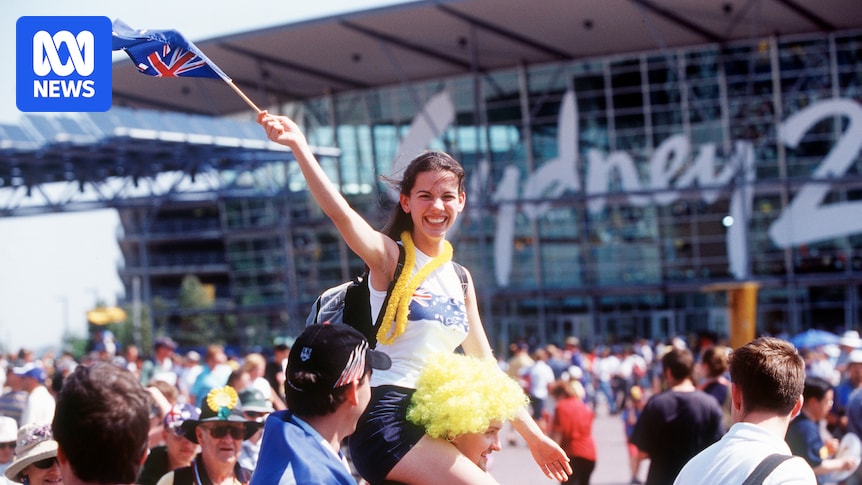
It has been 25 years since the Sydney Olympics, an event hailed as the “best games ever” and a defining moment in Australian history. In September 2000, the world watched as running champion Cathy Freeman lit the Olympic cauldron, marking the beginning of a 16-day celebration that showcased Sydney on the global stage. The event was not only a sporting triumph but also a catalyst for significant urban renewal and economic revitalization.
The announcement of Sydney as the host city for the 2000 Olympics came in 1993, following intense competition with Beijing. This victory sparked nationwide euphoria and set the stage for a transformation that would breathe new life into a city struggling economically.
Resurrecting Sydney from Economic Doldrums
Frank Sartor, who served as the Lord Mayor of Sydney during this pivotal period, inherited a city that was financially strained. The successful Olympic bid offered a unique opportunity to rejuvenate Sydney. While the city council focused on revitalizing the Central Business District, the New South Wales and federal governments embarked on the ambitious task of developing a new precinct for the Olympic venues.
The designated site, known as Homebush Bay, was an industrial wasteland in Sydney’s west. David Richmond, appointed as director-general of the Olympic Coordination Authority in 1995, led the monumental task of transforming this area. “One of the great achievements of the Olympics was the remediation of the whole site, which was a massive and controversial task,” Richmond noted.
“When I got the Olympic job, I had to pretend that I didn’t love the Olympics because I had to make a lot of hard decisions and be very hard-nosed,” Richmond said. “The day that the Olympics started, one of my close colleagues said, ‘You actually like this stuff, don’t you?’ I said, ‘I love it’.”
Olympic Torchbearers and the Spirit of the Games
As the 2000 Olympics approached, excitement built across Australia. The torch relay, a symbolic journey through deserts and mountains, culminated in Sydney with Cathy Freeman lighting the cauldron. This moment almost turned into an international debacle when the cauldron got stuck for nearly four minutes. “Apparently there were people underneath the cauldron and banging away trying to get it to work,” recalled a witness. Fortunately, the cauldron continued its ascent, burning brightly for the duration of the Games.
Richard Cashman, a sports historian and one of the 12,000 torchbearers, described his experience as euphoric. “When I held the torch and I ran my 500 metres, my feet didn’t touch the ground,” he said.
Sydney 2000’s Legacy of Volunteering
The Sydney Olympics were notable for their volunteer program, which saw over 40,000 Australians contributing to the event’s success. Volunteers like Sandy Barker, who took leave from her teaching job in Perth, played crucial roles in ensuring the Games ran smoothly. “There was a real pride that it was coming to Sydney,” Barker said, reflecting on her determination to be part of the experience.
For Laura White, volunteering was a way to stay connected to her Olympic dreams after realizing she wouldn’t compete as a canoeist. “I realised when I was about 13 that I didn’t have the speed to make the Olympics myself, but then I was told I could become an official, and it kind of grew from there,” she explained. White’s involvement in the Sydney Olympics set a standard for future events, influencing volunteer cultures at subsequent Games.
How Sydney Dodged the Olympic Graveyard Path
Unlike many other Olympic cities, Sydney avoided the fate of becoming a graveyard for unused venues. Sydney Olympic Park, which attracted a record 11.9 million visitors in the 2023-24 financial year, remains a vibrant hub of activity. All competition venues are still in use, and the precinct has evolved from a sporting venue to a center of entertainment and residential living.
Allison Taylor, chief executive of the Sydney Olympic Park Business Association, highlighted the area’s transformation. “The precinct has evolved from being a solely sporting precinct to one of entertainment,” she said. The Olympic Village, refurbished into housing post-Games, is now home to about 5,000 residents.
Sydney’s Olympic Housing Legacy Still Taking Shape
Looking ahead, Sydney Olympic Park is poised for further transformation. The upcoming Sydney West Metro line, set to open in 2032, will include a station at Olympic Park, enhancing connectivity. Stage two of the Parramatta Light Rail project will also serve the area, paving the way for more housing and commercial development.
A draft masterplan by the NSW government suggests Olympic Park could accommodate an additional 25,000 residents by 2050. However, with Sydney facing a chronic housing shortage, some experts are calling for more ambitious targets. Gary White, the state’s chief planner from 2015 to 2019, suggested the precinct could house up to 70,000 residents.
“With Olympic Park you’ve got a site at the geographic centre of Sydney. It’s a site that deserves an innovative, outside-the-box approach,” White said. “We’ve waited 25 years, it’s a quarter of a century since the Olympic Games, so there’s still a feeling of waiting and wanting something that’s responding to one of the most significant sites in metropolitan Sydney.”
The legacy of the Sydney 2000 Olympics continues to unfold, as the city builds on its past successes and looks toward a future of growth and innovation.





